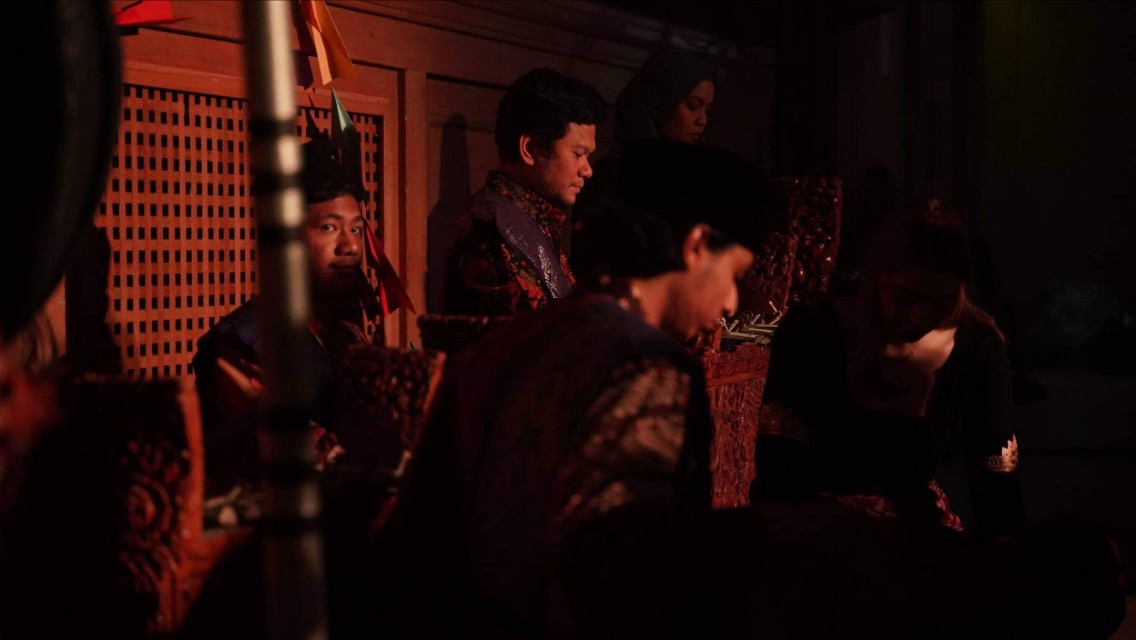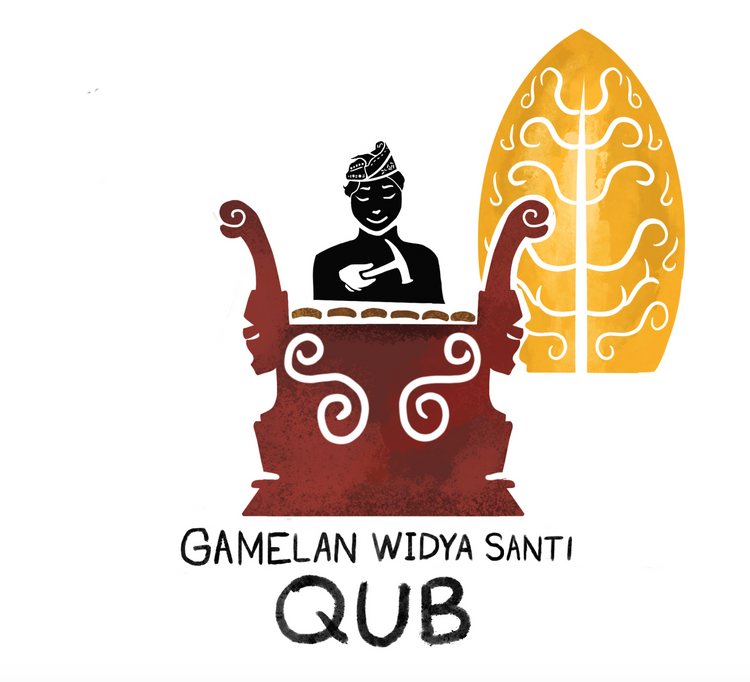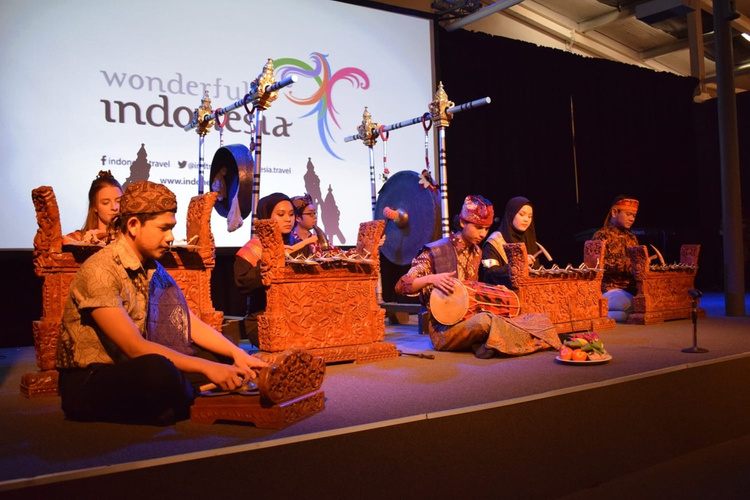
I left Kuala Lumpur for the suburbs of Connecticut at the age of 16. Intending to take full advantage of my opportunity to live in the land of the free. Being an impressionable teenager, I shed my Southeast Asian ways temporarily and tried to become one with the other residents of my student dorm. A few weeks into my stay, I came across some familiar words while walking around the city square. “Gamelan”, said the flyer pinned to a corkboard, advertising recruitment for the college’s gamelan ensemble. Despite growing up in Kuala Lumpur in the 21st century, I knew this word.
Merantau. The practice of travelling to foreign lands, experiencing, learning, engaging and returning home. A rite of passage amongst the Minangkabau of Sumatra, this institution allows for resource dependent young men to gain an informal education through embedding themselves in an unfamiliar social landscape, before resettling in their place of upbringing and applying this education to their social and cultural profitability. With an emphasis on learning and returning, merantau separates itself from economic migration. As the world has changed, so has merantau, and the passage, or rantau, of thousands of students to educational academies far from home can now be constituted as an act of merantau.
I walked into my first gamelan class on a chilly November day. Spread out before me were the colorful, elaborately carved instruments of a central Javanese gamelan set. I recognized gamelan as a form of musical tradition prevalent in Java, Bali and the East Coast of Malaysia.
The origins of gamelan have been lost to time, however the presence of gamelan instruments in the carvings of the 8th century Borobodur temple complex demonstrate the long-standing importance of gamelan in the culture of Nusantara. While there exists a diverse range of regional variations, gamelan generally consists of a drummer keeping the time and directing the ensemble, metallaphones providing the main melody and intricate elaborations on this melody and gongs struck at intervals to mark periods in the musical passage. Flutes, violins, zithers, cymbals and other instruments are also traditionally utilized in gamelan, having been assimilated through their introduction into the region by traders from China, Persia, India and beyond.

I was familiar with the resonance of the deep gongs and chimes of the metal bars as they are struck from hearing gamelan at the National Museum when I was younger. However, some cognitive dissonance came as a result of my association of the gamelan being played under the shade of a Singgora-tiled wooden abode in Terengganu in the 19th century, rather than in the basement of a Gothic styled faculty building on an American college campus in the 2010s. Why, I wondered, was there a gamelan set in Connecticut?
Being Malaysian, I made the gross assumption that the local students would be inept at becoming practitioners of an art form that I felt belonged to the Nusantara. Over the course of the semester, however, I learnt that this assumption held no truth. I was the least knowledgeable person on gamelan in the entire class, and I found out that some of the American students, who had been playing gamelan for a number of years, could speak Indonesian and even Javanese!
Over time, as I got to know my other fellow gamelan players a little bit better, I uncovered that a lot of them were not, as I expected, students of anthropology or other ‘oriental’ based disciplines. There were students of engineering and accountancy, from places like Atlanta and San Francisco, who discovered gamelan at college and appreciated it for what it is. There was little distinction of gamelan as something belonging to the ‘other’. The compositions of K.P.H Notoprojo were discussed on equal terms with western composers such as Erik Satie, with an unadulterated emphasis on the aural, musical aesthetics of gamelan rather than as a cultural and even mystical curiosity.
Similar to how we approach music, the sharp distinction between the East and the West are also blurring. After class we would stay back and chat on a myriad of Southeast Asian topics, such as comparisons between Malay and Javanese gamelan, the politics of Jokowi and fundamentalism in Aceh.
The end of the semester. It has become college tradition that a gamelan concert is given every year and this was held at the university’s art gallery. We performed the repertoire that we learnt throughout the past 4 months, but with an added twist: this time we were providing background music for a Wayang Kulit show. We had never practiced this before. Performing gamelan for Wayang Kulit is a completely different animal than a standard performance.
The leader of the Wayang Kulit, the dalang, relays signals to make the song start, end, go louder, go softer, go faster, go slower, switch to a new one and switch back to the drummer of the ensemble, who translates these signals into particular elaborations on the drum which in turn tells us, the players, what to play. While I could vaguely grasp the language of the drum, I was unprepared to interpret the drum at the required speed of a Wayang Kulit performance, where signals came in rapid intervals. To calm my nerves, I told myself that it wouldn’t matter, as the audience could not possibly be very large.
My prediction turned out to be wrong. There was a huge turnout and the hall was packed. Over the course of the two-hour performance, during which the audience stayed for the entire duration captivated by the drama of Arjuna and Krishna, my gamelan playing skill was tested to its limits. Here I learn that teamwork is essential to a gamelan ensemble. In a gamelan, no instrument is more important than the other and it is the constructed ‘whole’ of the ensemble which results in the desired sound. Furthermore, it is important for gamelan players to exercise respect, not just towards the leader of the ensemble who is the transmitter of knowledge, but for the instruments themselves, which are to be handled carefully and not to be stepped over.

Just as merantau has changed, so has the gamelan. In its most native context, gamelan was most commonly used in the proceedings of the royal courts of Java, Bali, Pahang, and Terengganu, as well as to provide accompaniment to shadow puppet theatre. Introduced to the West by the Dutch and British Empires, it is no longer perceived as an oriental curiosity, an object of wonderment to be displayed at ethnographic exhibitions. Gamelan is today a global art form through the unassuming but sustained labours of gamelan actors over the past century. As the teachers of gamelan move from being Indonesian Fulbright scholars to international academics, as repertoire moves from traditional Javanese Ketawangs to modern, experimental compositions and as the material form of the instruments themselves transition from being Javanese produced to being made out of Western materials in a suburban garage, the contextual terms of gamelan ensembles will have to change.
After a year in Connecticut, I began studying at the Queen’s University of Belfast, where I took on the role of teaching Balinese gamelan on the complete Gong Kebyar set that is possessed by the department of Ethnomusicology. With a history that parallels that of gamelan sets in other institutions including the one in Connecticut, the Belfast Gong Kebyar is a set that was being regularly played in Indonesia before being acquired by the university and shipped over to the west where an academic of the university could take what they learnt during fieldwork and turn it into an exercise that would benefit the community. I was introduced to gamelan through slow and courtly Javanese compositions such as Ladrang Wahyu and Ayak-Ayakan which I played in Connecticut, and my transition to the aggressive, fast-paced Balinese Gong Kebyar proved challenging.

However, after undergoing some training I now teach traditional Gong Kebyar repertoire such as Tabuh Baris and Gilak to a diverse range of students. As the director of the Belfast gamelan, I have joined the constellation of over 200 gamelan ensembles outside of Southeast Asia, with each one of them being an active actor in negotiating and shaping relationships with the Nusantara, forming pockets of gamelan practitioners and appreciators in their respective communities.
If the point of Merantau is to go abroad to gain knowledge from others and return home to apply this knowledge and contribute to my community, where does this leave my experiences of the gamelan? In my merantau, I have grown up apart from gamelan culture that is part of my heritage, gone abroad to learn about gamelan, and have contributed to a community abroad. And yet, one thing remains fundamentally the same. During the course of a gamelan performance, players will help out others who forget where they are in the song or what they are supposed to play, singing the notes or discreetly sliding their notation across the floor. More than the music, it is also about the community one builds around the music. The question now is how I can fulfill the cyclical element of merantau: upon my return to Malaysia, how should I take my experience and apply it to the context of urban Kuala Lumpur? That is a bridge that I am looking forward to crossing in the near future.
Adam Farhan is an Anthropology and Politics student at Queen’s University Belfast. Hailing from Kuala Lumpur, he spends as much time as possible either on the beaches of Terengganu or exploring obscure small-town museums. He enjoys reading Lat comics and combing through flea markets to find collectibles for as little money as possible. After a number of internships at the Centre for Orang Asli Concerns, SUHAKAM, and the National Heritage Department, he has set his sights on a future career in the field of human rights and policy-making. Besides being the director of a Gamelan ensemble, he is also International Students Officer of the Student Union, President of the International Students Society, and United Nations Association of Queen’s University Belfast. Find him on Instagram at @adam105001.